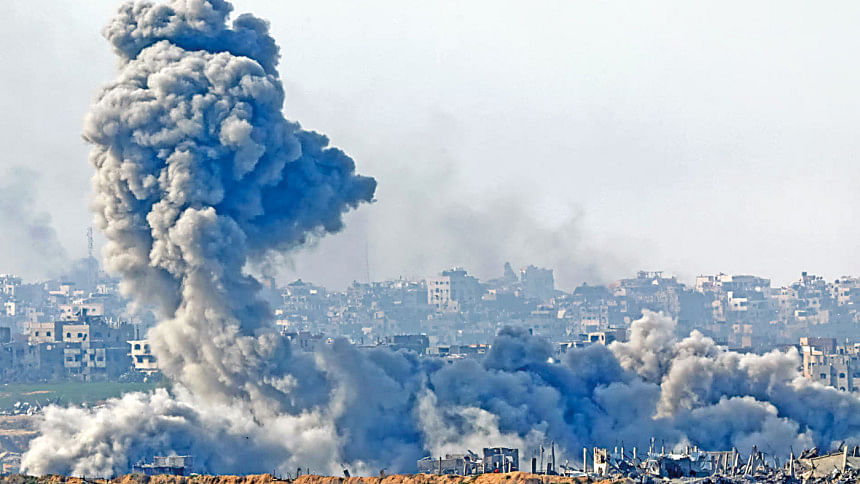Environmental protection during armed conflicts

The relationship between environmental protection and armed conflict is 'bi-directional'. The concern lies not only with how international law applies to military activities and their environmental effects, but also with how environmental risks can escalate threats to peace and security. This write-up aims to highlight the important rules in international law relating to environmental protection in armed conflicts.
Starting with the 1982 World Charter for Nature, which took a more general stance, asserting that nature must be protected from harms resulting from war or other hostile actions. It clearly states that military operations that are harmful to the environment should be avoided. Next, Principle 24 of the 1992 Rio Declaration can also be interpreted either as requiring states to respect existing international legal protections for the environment during armed conflict or as mandating active environmental protection per international law during such times.
The 1997 UN Watercourses Convention takes a distinct approach by explicitly referencing international humanitarian law. Article 29 states that international watercourses and related infrastructure must be protected following the principles and rules of international law applicable to both international and non-international armed conflicts.
Similarly, the International Law Commission (ILC) addressed whether environmental and other treaties remain valid during armed conflict in its 2011 Draft Articles on the Effects of Armed Conflict on Treaties. According to Article 3, the ILC affirms that armed conflict does not automatically suspend or terminate the operation of treaties. Consequently, the Draft Articles generally presume that environmental treaties remain in effect during times of war, unless a treaty explicitly states otherwise.
In fact, it is now a well-accepted principle of international law that the methods and means of warfare are not unlimited. They are restricted to activities necessary to achieve legitimate military objectives, must prevent unnecessary suffering and superfluous injury, and must comply with international law. This general prohibition also extends to prohibition against harming the environment. For instance, the 1996 Draft Code of Crimes against the Peace and Security of Mankind classified a war crime to include, among other acts, the use of methods or means of warfare that are intended or likely to cause extensive, long-lasting, and severe harm to the natural environment.
Moreover, the first treaty to establish specific rules for environmental protection from the consequences of military activities was the 1977 Convention on the Prohibition of Military or Any Other Hostile Use of Environmental Modification Techniques. This Convention aims to prevent the use of the environment as a means of warfare by prohibiting the deliberate manipulation of natural processes to produce phenomena such as hurricanes, tidal waves, or climate change. It prohibits parties from using environmental modification techniques for military or hostile purposes if such use results in widespread, long-lasting, or severe effects intended to cause destruction, damage, or injury to any other party.
Not to mention, the 1977 Additional Protocol I to the 1949 Geneva Conventions contains two explicit obligations aimed at protecting the environment, which may now reflect binding norms of customary international law. Article 35 prohibits the use of methods or means of warfare intended or expected to cause widespread, long-term, and severe damage to the natural environment. Similarly, Article 55 states that during armed conflicts, efforts must be made to safeguard the environment from such damage. This includes a ban on methods or means of warfare intended or likely to cause such harm, and that may endanger the health or survival of the civilian population. Article 55 also prohibits reprisals against the natural environment.
In addition to the specific provisions of international law, some examples of real-life incidents may clarify the matter more. For instance, the Iraq's invasion of Kuwait in August 1990 prompted the UN Security Council to consider, for the first time, state responsibility for environmental harm caused by unlawful military actions. In Resolution 687, Iraqi accountability was underscored under international law for, among other things, environmental damage and the depletion of natural resources resulting from its illegal invasion and occupation of Kuwait. Similarly, in February 1993, the UN General Assembly adopted a resolution affirming that wanton environmental destruction, when not justified by military necessity, clearly violates international law. Lastly, a significant recent development was the 2022 Draft Principles on the Protection of the Environment in Relation to Armed Conflicts. These principles aim to protect the environment before, during or after an armed conflict, as well as during occupation.
International law plays a crucial role in mitigating the environmental impacts of armed conflict by establishing legal frameworks and principles that protect ecosystems during wartime. The continued development and implementation of international legal norms are essential to ensure that environmental protection becomes an integral part of conflict resolution and peacebuilding efforts.
The writer is an LLM Candidate, University of Dhaka.

 For all latest news, follow The Daily Star's Google News channel.
For all latest news, follow The Daily Star's Google News channel. 



Comments